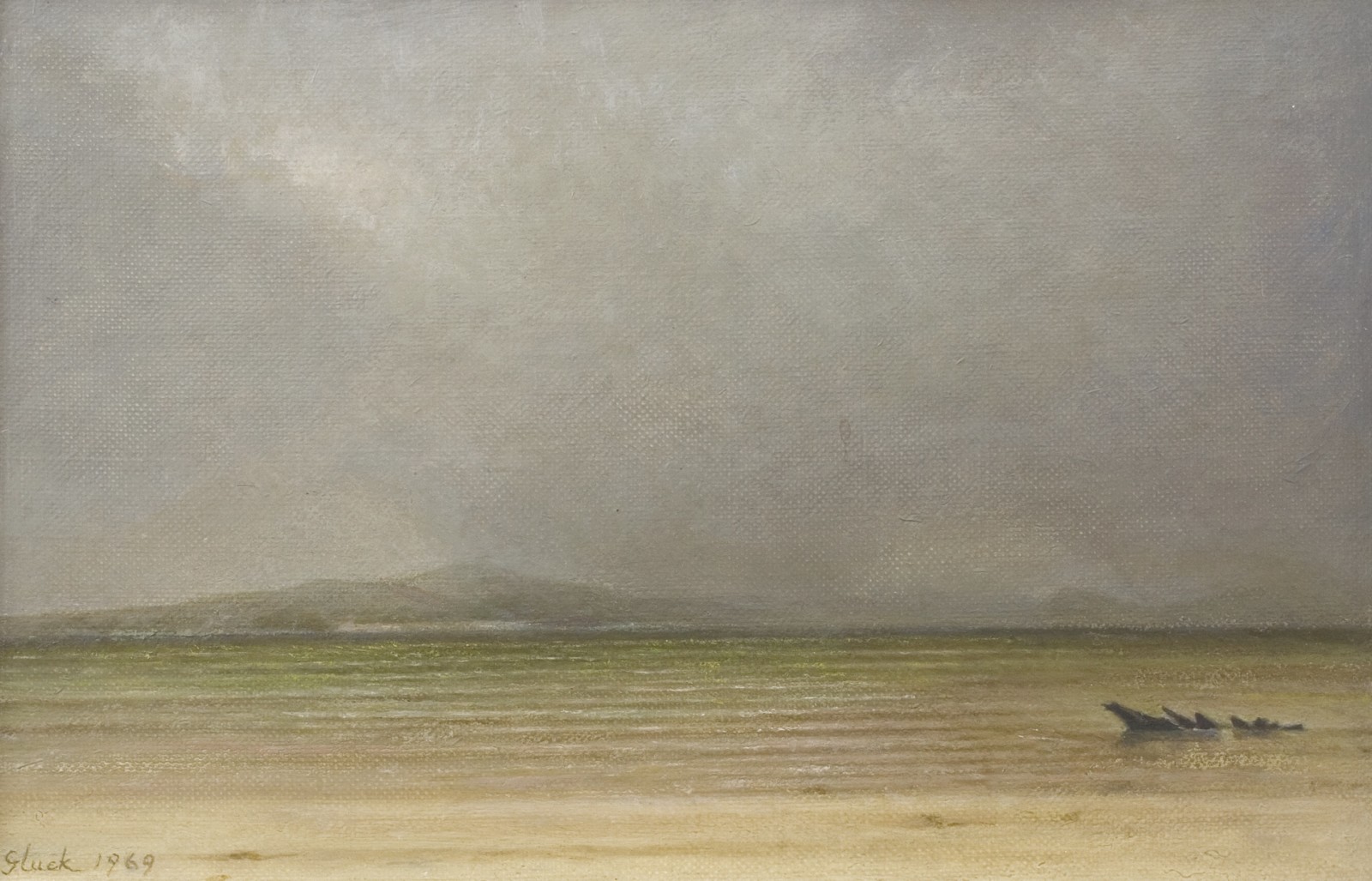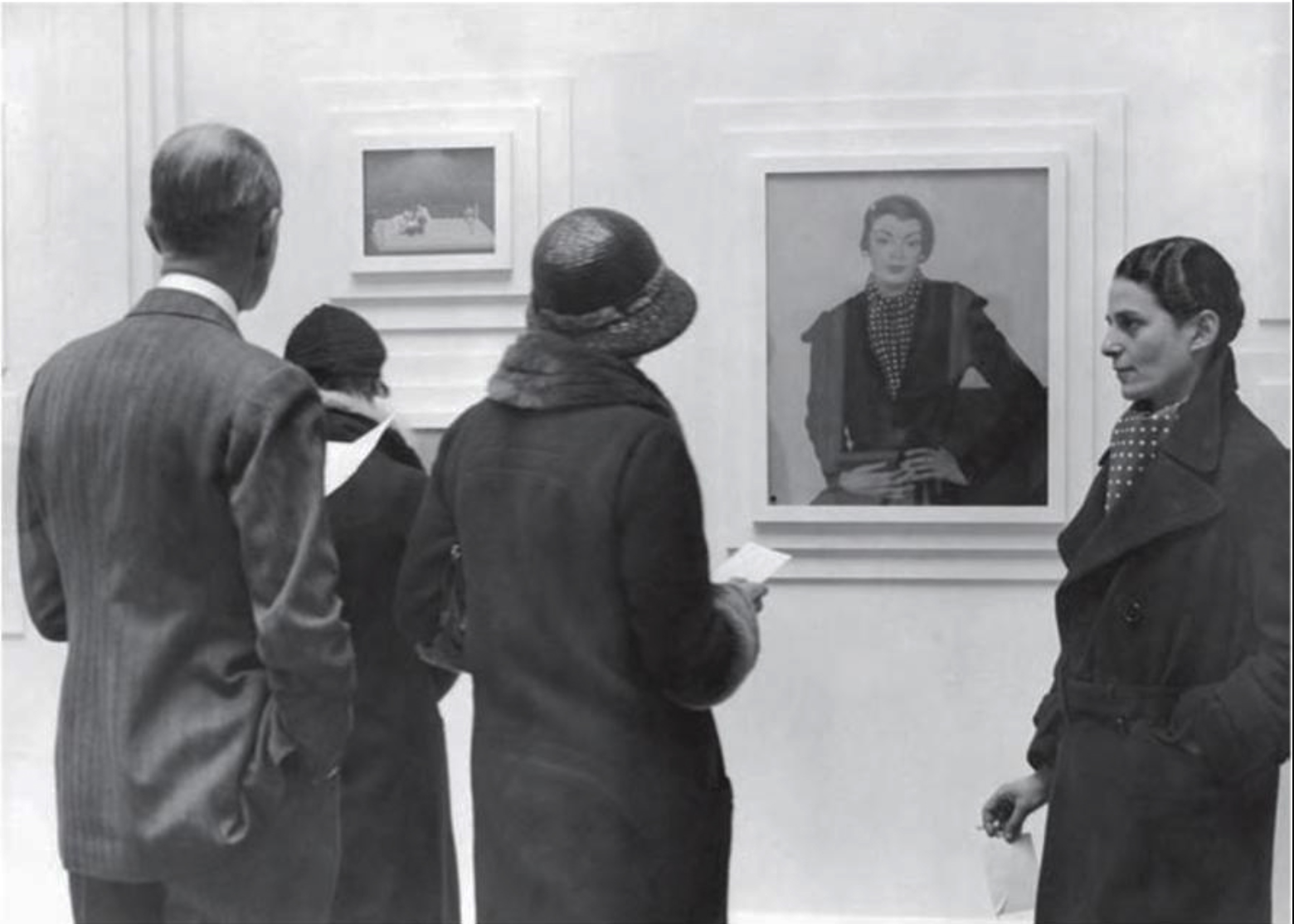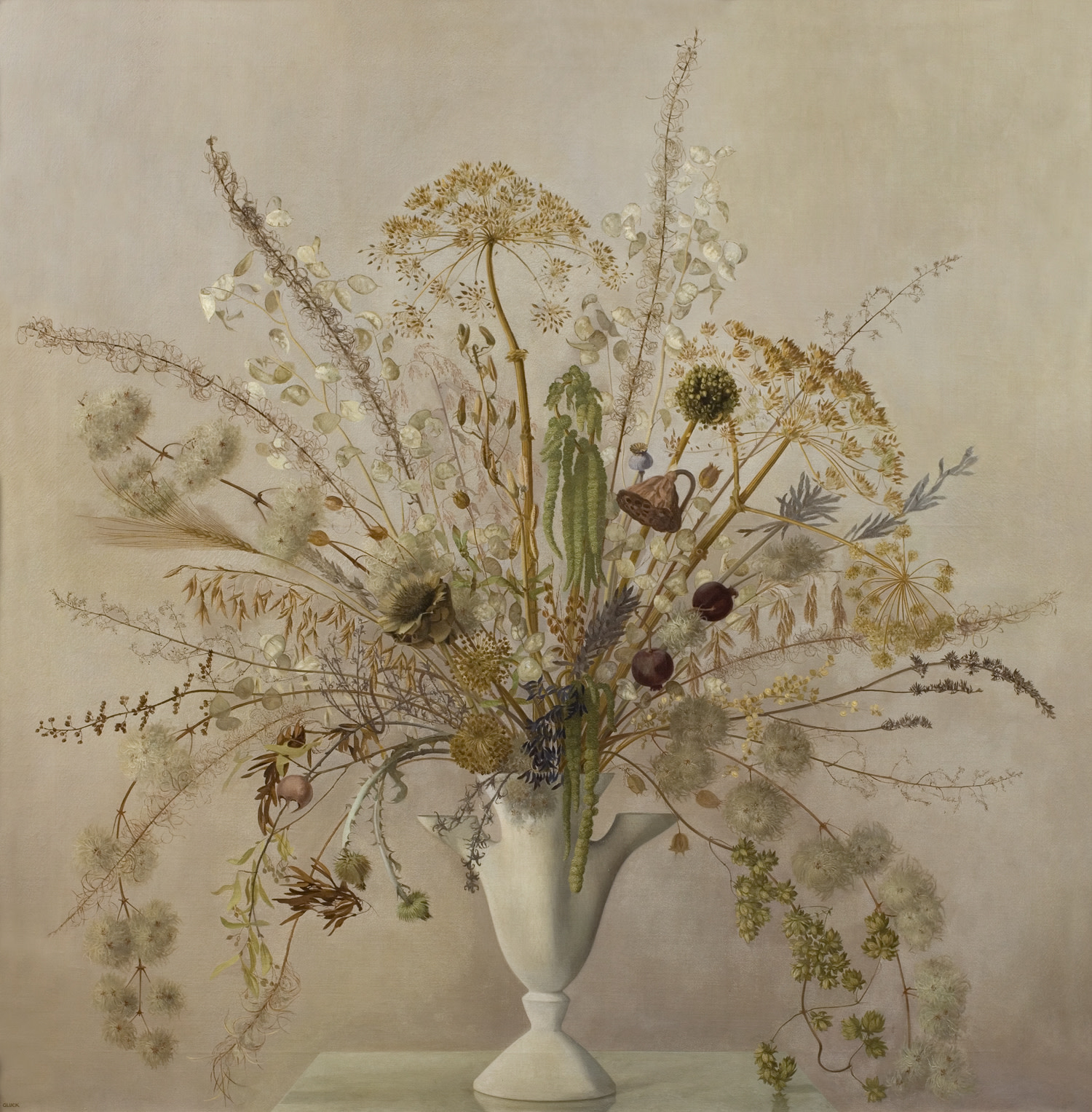This week Insight considers the artist born Hannah Gluckstein. Shedding the gender that was assigned at birth, Gluckstein became Gluck, thus forging a formidable identity which has come to be synonymous with quietly profound works of art.
Gluck
Cottage with Cat, 1967

In sharp-eyed atmospheric landscape paintings, Gluck (1895–1978) often imbued the subject with a wistful sense of poetry. A painting like Seascape, possibly executed during a visit to Ireland, draws from the veils of cloud a pregnant glimmer of light in the upper reaches of the sky. The intensity of these paintings has several sources. They were typically painted on a small scale, with canvases or panels rarely measuring more than 14 inches along one side; the detailed naturalistic imagery is often so concentrated that it feels carefully meditated and somehow significant. Whether painting on a larger or a smaller scale, the finesse of execution in each painting suggests Gluck’s fastidious scrutiny of the subject.

The visual intensity of Gluck’s paintings is further heightened by uniquely distinctive frames. They were of the artist’s own patented design and were christened ‘Gluck frames’. The stepped format finished with a glistening layer of white paint, entirely free of mouldings, begs an important question about the nature of the artist’s naturalistic style.

Though Gluck painted in a representational manner, the overtly modernist character of the ‘Gluck frame’ draws attention to a high degree of self-awareness in paintings like Cottage with Cat. The horizon is cropped close to the bottom edge of the canvas; the still, subtly modulated sky fills the picture; any sense of pictorial depth is steeply contracted, with the field, a wall and the cottage existing in a narrowly confined space at the front of the picture plane. In another context and with a different treatment, the subject-matter would be a genre scene worthy of Abraham Bloemaert or Jan van Goyen. In Gluck’s hands, an ineffable poignance is achieved.

In recent years, Gluck’s carefully constructed gender identity has brought the artist to the attention of curators in Britain and elsewhere. In 2018, six of Gluck’s oil paintings were exhibited in Laura Smith’s imaginative and critically acclaimed exhibition Virginia Woolf: an exhibition inspired by her writings. Among those selected was a portrait of Gluck’s partner –Edith M. Craig, known exclusively as ‘Craig’ – which was also shown in MORAL DIS/ORDER, an exhibition addressing ‘art and sexuality in Europe between the wars’, held at IVAM, Valencia, in 2019. Works displayed nearby in the Valencia show included paintings by Duncan Grant and Glyn Philpot.

Most recently, Gluck was featured prominently in the Garden Museum’s exhibition, Constance Spry and the Fashion for Flowers. Gluck had an affair with Spry between 1932 and 1936, in which time and immediately afterwards the artist painted several remarkable natures mortes which intimate Spry’s arrangements. As art historians continue to investigate the work of previously marginalised gender-fluid artists, it can only be hoped that a more developed understanding will emerge of sophisticated, visually resounding artworks like those of Gluck.

Images:
1. Gluck, Seascape, 1969, oil on board, 14 x 21.8 cm | For Sale
2. A portrait of Gluck by Angus McBean, circa 1930 © The Estate of Angus McBean
3. The Gluck Room at the Fine Art Society, 1932
4. Gluck, Cottage with Cat, 1967, oil on board, 20 x 25 cm | For Sale
5. Virginia Woolf: An Exhibition Inspired by her Writings at the Fitzwilliam Museum in 2018
6. Gluck, Nature Morte, 1937, Private Collection © The Estate of Gluck

